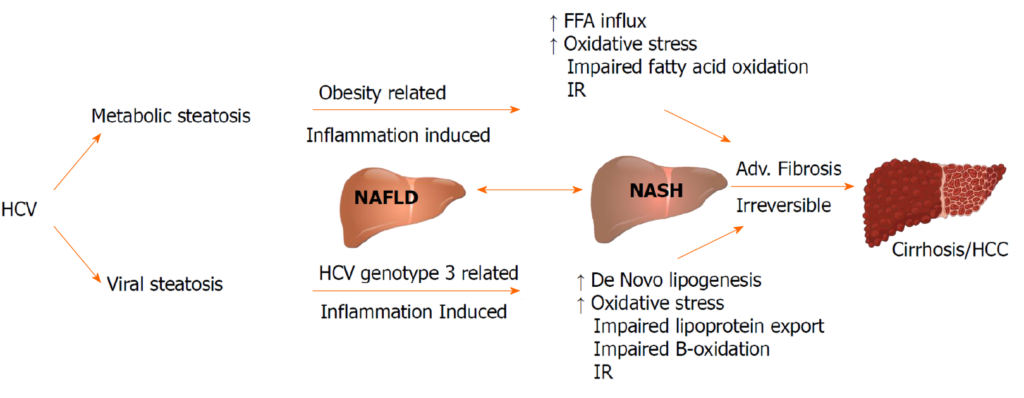Chronic Hepatitis C, particularly Genotype 3, represents a significant global health challenge. With millions of people affected, understanding this strain’s unique characteristics, progression, and treatment options is critical for achieving better patient outcomes. In this article, we delve into the complexities of Genotype 3 Hepatitis C, exploring everything from its causes to the latest advancements in treatment. Our aim is to provide you with accurate, evidence-based insights that will help manage and possibly overcome the condition.

What is Hepatitis C?
Hepatitis C is a viral infection caused by the Hepatitis C virus (HCV) that primarily affects the liver. The virus is transmitted through blood-to-blood contact, typically from shared needles, unsafe medical practices, or transfusions prior to blood screening. If left untreated, chronic Hepatitis C can lead to serious liver damage, cirrhosis, and even liver cancer.
Hepatitis C Genotypes
HCV is classified into several genotypes, each of which has different subtypes. Genotype 3 is one of the most common and is notably prevalent in regions such as South Asia, the Middle East, and parts of Europe. This specific genotype requires tailored approaches in terms of treatment and management.
Genotype 3 Hepatitis C: Unique Characteristics
Prevalence and Demographics
Genotype 3 accounts for approximately 30% of all HCV infections worldwide. It is notably more common in certain regions, such as India and Pakistan, but it can be found in various parts of the world. Genotype 3 is often associated with a more rapid progression to cirrhosis and may result in liver steatosis (fatty liver), which can complicate the treatment process.
Why Genotype 3 is Different
Unlike other genotypes, Hepatitis C Genotype 3 is often more resistant to treatment with older antiviral drugs. This resistance has prompted significant research into more effective treatment options. Patients with this genotype are also at a higher risk of developing cirrhosis and hepatocellular carcinoma, making early diagnosis and intervention essential.
Symptoms of Chronic Hepatitis C – Genotype 3
Chronic Hepatitis C often remains asymptomatic for many years, leading to a delay in diagnosis. However, when symptoms do appear, they can range from mild to severe. The common signs and symptoms include:
- Fatigue and weakness
- Jaundice (yellowing of the skin and eyes)
- Abdominal pain, especially in the upper right side
- Dark urine and pale stools
- Swelling in the legs and abdomen (ascites)
- Itchy skin
- Loss of appetite
These symptoms can be more pronounced in individuals with Genotype 3, especially if the infection has progressed to cirrhosis or fatty liver disease.
Diagnosis of Hepatitis C Genotype 3
Diagnosing Hepatitis C requires a series of blood tests. The process typically begins with a screening test for antibodies against the Hepatitis C virus (anti-HCV). If this test is positive, further tests are conducted to confirm the presence of the virus and determine the specific genotype, which is crucial for tailoring treatment plans.
Key Diagnostic Tests
- HCV RNA Test: This measures the amount of virus in the blood and confirms active infection.
- Genotype Testing: Identifies the specific strain (genotype) of HCV.
- Liver Biopsy or Imaging: Determines the extent of liver damage, such as fibrosis or cirrhosis.
Treatment Options for Hepatitis C Genotype 3
Antiviral Therapy
Historically, the treatment for Hepatitis C Genotype 3 involved the use of interferon-based therapies, which were often associated with significant side effects and lower success rates. However, the advent of direct-acting antiviral (DAA) drugs has revolutionized the treatment landscape for Hepatitis C.
Direct-Acting Antivirals (DAAs)
DAAs are a class of antiviral medications that target specific stages of the Hepatitis C virus lifecycle. For Genotype 3, the following DAAs have been proven to be effective:
- Sofosbuvir (Sovaldi) combined with Daclatasvir (Daklinza): This combination is a first-line treatment and has shown high success rates in eradicating Genotype 3.
- Glecaprevir/Pibrentasvir (Mavyret): This newer combination regimen is also highly effective, with shorter treatment durations and fewer side effects.
DAA therapy typically lasts between 8 to 12 weeks, depending on the extent of liver damage and the specific combination of drugs used. The goal of treatment is to achieve a sustained virologic response (SVR), meaning the virus is undetectable in the blood 12 weeks after treatment completion.
Ribavirin: When Necessary
In some cases, ribavirin may be added to the DAA regimen for patients with advanced liver disease. However, ribavirin is not always necessary and is typically reserved for those who have not responded to other treatments or who have severe cirrhosis.
Liver Transplantation
For individuals with advanced cirrhosis or liver failure due to Hepatitis C Genotype 3, liver transplantation may be considered. The success rates of transplantation are high, but ongoing antiviral therapy is required to prevent reinfection of the new liver.
Managing Chronic Hepatitis C Genotype 3: Lifestyle Considerations
Living with chronic Hepatitis C, particularly Genotype 3, requires careful management. Patients should:
- Avoid Alcohol: Alcohol can accelerate liver damage and interfere with the effectiveness of antiviral treatments.
- Healthy Diet: A balanced diet can help maintain overall liver health. Avoid fatty foods, as they can worsen liver steatosis (fatty liver).
- Regular Monitoring: Regular check-ups and blood tests are essential to monitor liver function and detect any complications early.
The Future of Hepatitis C Treatment
The field of Hepatitis C treatment continues to evolve. Research into vaccines, improved antiviral medications, and better diagnostic tools is ongoing. The increasing availability of DAAs has transformed the prognosis for Hepatitis C patients, and new breakthroughs in the fight against the virus offer hope for even more effective treatments in the future.
Prognosis and Long-Term Outlook
With early diagnosis and proper treatment, the prognosis for patients with Hepatitis C Genotype 3 is significantly improved. Achieving an SVR is the ultimate goal, and many patients can lead a healthy life post-treatment. However, without treatment, Genotype 3 can progress to cirrhosis, liver failure, and even liver cancer, making timely intervention critical.